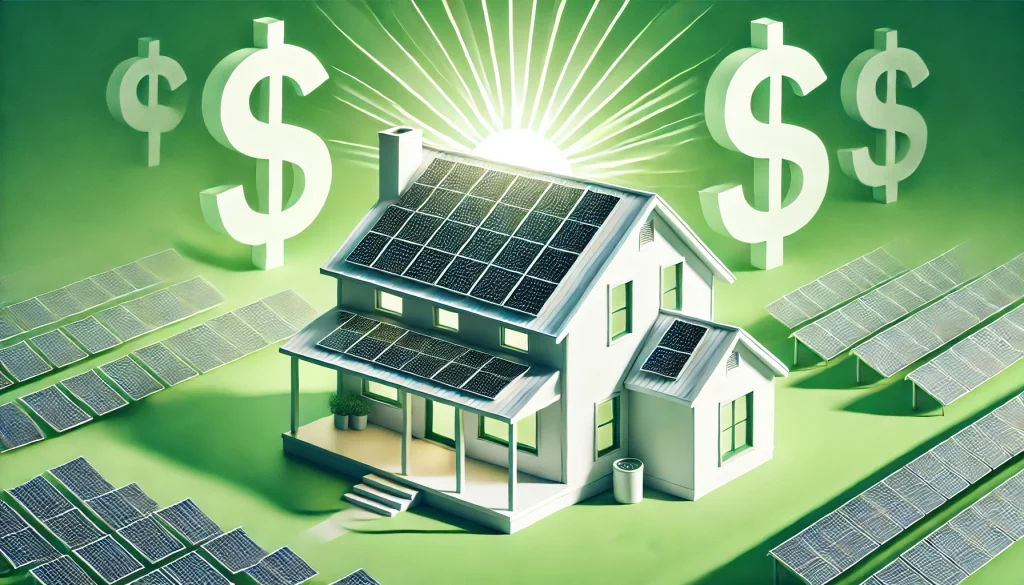US Solar Power: A Smart Investment for Homeowners

US Solar Power: The shift toward renewable energy sources in the United States has never been more prominent, and at the heart of this movement is solar power. US Solar Power energy isn’t just a trend—it’s a practical, cost-effective solution for homeowners seeking to cut their energy bills while reducing their carbon footprint. If you’ve been considering US Solar Power for your home, now might be the perfect time to take the plunge.
But what are the actual benefits of US Solar Power installation, and more importantly, how much will it really save you? In this guide, we’ll break down everything you need to know about solar energy’s financial and environmental impacts, including specific cost-saving strategies and the reasons it’s become so popular in the U.S.
Table of Contents
Why Go Solar? The Key Benefits
US Solar Power panel installation offers a multitude of benefits that go far beyond just saving money. Let’s dive into some of the most significant advantages.
1. Significant Reduction in Energy Costs
One of the main drivers for homeowners considering solar is the potential to drastically reduce or even eliminate their electricity bills. Solar panels convert sunlight into electricity, allowing you to generate your own power. Depending on the size of your solar system and the amount of sunlight your home receives, you could cut your electricity bill by 50% or more.
In some cases, homeowners even produce more energy than they use, allowing them to sell the excess back to the grid in states that have net metering policies. Imagine your electric meter running backward!
Real-Life Savings: According to the US Solar Power Marketplace, the average homeowner saves between $10,000 and $30,000 over the lifetime of their solar panel system. That’s a substantial amount of money that stays in your pocket instead of going to your local utility company.
2. Solar Panels Increase Property Value
Did you know that installing US Solar Power can boost the value of your home? Research conducted by Zillow found that homes with US Solar Power sell for about 4.1% more than comparable homes without it. For a $500,000 home, that’s an extra $20,500 added to the sale price.
Solar panels are seen as a home improvement, similar to a renovated kitchen or an upgraded HVAC system. Homebuyers are increasingly looking for energy-efficient features that will save them money in the long run, and solar panels are at the top of that list.
Federal and State Incentives: A Game Changer for Cost Savings
The upfront cost of US Solar Power panel installation can be a concern for some homeowners, but here’s where things get exciting. Government incentives at both the federal and state levels can significantly reduce the total cost of installation.
1. Federal Investment Tax Credit (ITC)
The Federal Solar Investment Tax Credit (ITC) is one of the most significant incentives for homeowners. As of 2024, the ITC allows you to deduct 30% of the cost of installing solar panels from your federal taxes. So, if your system costs $20,000, you could potentially receive a $6,000 tax credit.
While the ITC has been in place for several years, it’s important to act now, as the percentage is set to decrease in the coming years.
2. State and Local Rebates and Incentives
Many states also offer their own incentives to promote solar energy. For example, California, New York, and New Jersey provide rebates that can reduce the cost of solar installation by thousands of dollars. These rebates vary by state, so it’s essential to check what’s available in your area.
Pro Tip: Some states also have performance-based incentives (PBIs), where you earn money based on the amount of solar energy your system generates over time. This can add up to significant long-term savings.
3. Net Metering Programs
In states with net metering, you can sell any excess electricity your solar panels generate back to the grid. Your utility company credits you for the extra power, further reducing your monthly electric bill. It’s like turning your roof into a mini power plant that earns you money.
Not all states offer net metering, so it’s worth checking with your local utility provider to see if this benefit is available in your area.
Environmental Benefits: Reducing Your Carbon Footprint
Switching to solar energy isn’t just about saving money—it’s also about doing your part to protect the environment. The average household in the U.S. generates roughly 7.5 metric tons of CO2 annually from electricity usage alone. By installing solar panels, you can significantly reduce your home’s carbon footprint.
Here’s how solar stacks up environmentally:
- Renewable Energy: Solar power is a clean, renewable source of energy. Unlike fossil fuels, which release harmful pollutants and greenhouse gases into the atmosphere, solar energy production generates zero emissions.
- Water Conservation: Traditional electricity production uses massive amounts of water for cooling. Solar energy, on the other hand, requires virtually no water to generate power, helping to conserve this precious resource.
- Sustainable Future: By transitioning to solar energy, homeowners are supporting the shift toward a more sustainable and eco-friendly energy grid.
Over the life of a solar system (25-30 years), a typical residential solar installation can offset about 100 tons of CO2. That’s equivalent to planting over 2,500 trees or removing the pollution caused by driving a car for 300,000 miles!
Solar Panel Costs: What to Expect
When it comes to installing solar panels, the question on most homeowners’ minds is: How much will it cost me?
1. Average Cost of Solar Panel Installation
The cost of a solar panel system for a typical home in the U.S. usually ranges between $15,000 and $25,000 before any incentives or tax credits. The price varies based on several factors, including the size of your system, the type of panels you choose, and your location.
While this may seem like a large investment upfront, remember that with federal tax credits, state rebates, and financing options, the net cost can be significantly lower.
2. Solar Financing Options
Many solar companies offer financing options that make the transition to solar energy more affordable. Some of the most common options include:
- Solar Loans: These allow you to finance the installation of your solar panels and pay off the cost over time. The interest rates on solar loans are often lower than traditional personal loans, making this a smart option for many homeowners.
- Leasing Options: With a solar lease, you don’t own the solar system, but you can still reap the benefits of solar energy. You’ll pay a fixed monthly fee to the leasing company, which is usually lower than your previous electric bill.
- Power Purchase Agreements (PPAs): In a PPA, a third party installs the solar system on your home, and you agree to purchase the electricity generated by the panels at a fixed rate, typically lower than what you’d pay to your utility company.
3. How Long Does It Take to Recoup Your Investment?
On average, U.S. homeowners see a payback period of 6 to 10 years for their US Solar Power panel system. After the payback period, you’re essentially generating free electricity for the remaining life of the system (which can be 15-20 years or more).
For example, if your solar system costs $20,000 and you save $2,500 annually on electricity, you’ll break even in 8 years. After that, you’re looking at 15-20 years of free or nearly free electricity, which translates to thousands of dollars in savings.
Choosing a Solar Installation Company
Now that you know the financial and environmental benefits of solar, how do you choose the right installer? Here are a few top-rated companies known for their quality and customer service:
1. SunPower
- Website: www.sunpower.com
- Specialty: Known for producing the highest-efficiency solar panels on the market, SunPower is a leader in solar technology and installation across the U.S.
2. Tesla Energy (formerly SolarCity)
- Website: www.tesla.com/solarpanels
- Specialty: Tesla offers solar panels and the Powerwall battery system, which allows homeowners to store solar energy for use during cloudy days or at night.
3. Vivint Solar
- Website: www.vivintsolar.com
- Specialty: Vivint Solar provides a range of solar energy services, including design, installation, and financing options for homeowners.
4. Momentum Solar
- Website: www.momentumsolar.com
- Specialty: Momentum Solar is known for its all-inclusive approach, offering customized solar solutions, financing, and high customer satisfaction.
Each company offers unique benefits, so it’s essential to do your research and get quotes from multiple installers. Most reputable US Solar Power companies provide free consultations, during which they’ll evaluate your home’s energy needs, roof orientation, and other factors to design a system that’s right for you.
Final Thoughts
Investing in US Solar Power panels isn’t just about reducing your electric bill—it’s about making a smart financial decision for your future and the planet. The benefits of solar power extend far beyond cost savings, offering increased property value, energy independence, and a smaller carbon footprint.
Whether you choose to buy, lease, or finance your US Solar Power panel system, the long-term savings and environmental benefits make solar one of the best home improvements you can make. Take advantage of federal and state incentives while they last and start enjoying the benefits of


